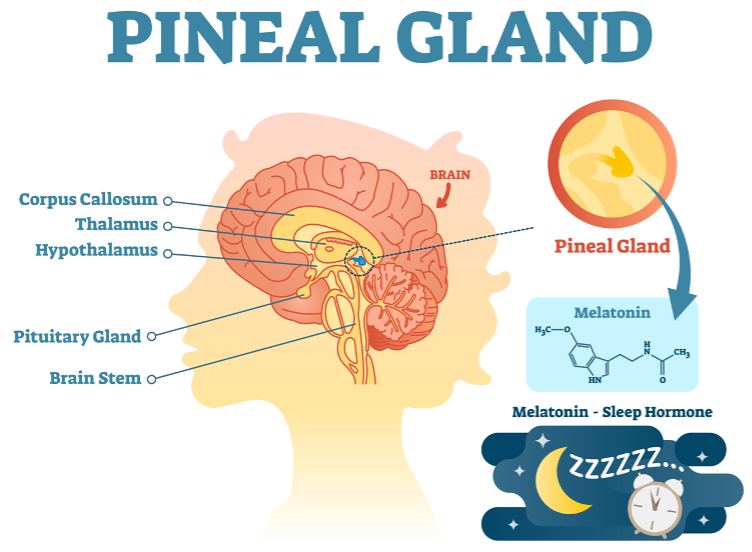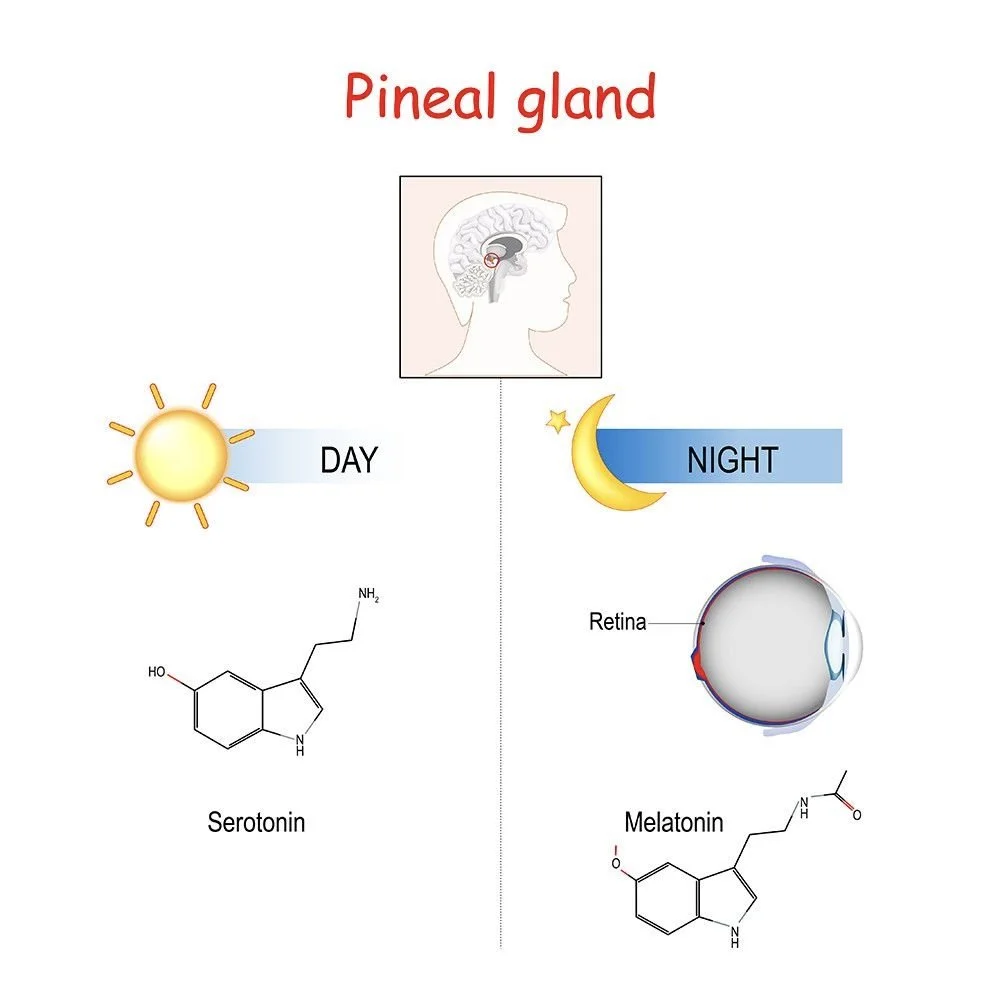1958: The Year We Bottled “Nightfall” — What Melatonin Really Does (and Doesn’t)
TL;DR: Discovered in 1958 from cow pineal glands because it lightened frog skin, melatonin has since become the go-to “natural” sleep supplement. But it’s not a sedative—it’s a clock cue. Used right, it can help realign your circadian rhythm (for jet lag, shift work, or night-owl drift). Used wrong, it’s just expensive grogginess. Pairing timed light, darkness, and gentle sound works better than chasing “sleep in a gummy.”
The Curious Origin Story
Illustration of the pineal gland and melatonin secretion
The year was 1958. Scientists isolated a new molecule from cow pineal glands that—oddly—made frog skin lighter. They named it melatonin (from “melas,” Greek for “black,” and “tonos,” for “stretch” or “tension”).
What started as a pigmentation curiosity became a sleep revolution decades later when researchers realized this hormone was the body’s internal signal for nightfall.
Fast-forward: what once lived in lab glassware now fills drugstore shelves as chewable bears, dissolving tabs, and “midnight reset” sprays. But here’s the twist—melatonin doesn’t make you sleep. It tells your body it’s time to start winding down.
The Science: A Clock Whisperer, Not a Knockout Drug
Pineal gland and melatonin’s role in circadian timing
Your circadian rhythm is like a 24-hour orchestra, with light as the conductor. Melatonin’s role? It’s the evening cue, the sheet music that tells the strings to soften and the brass to hush.
Unlike sedatives (which suppress brain activity directly), melatonin works upstream, adjusting timing. It helps you wantto sleep, not force it.
The How-To of Timing and Dose
Take it 2–3 hours before your desired bedtime.
This moves your biological night earlier—especially useful for jet lag or late chronotypes.Take it too late, and you may just feel foggy in the morning without sleeping better.
Less is more.
Doses around 0.3–1 mg often mimic the body’s natural signal. Higher doses don’t deepen sleep—they just hang around longer, sometimes causing vivid dreams or next-day grogginess.
Think of melatonin as a dimmer switch, not a hammer.
It sets the stage; it doesn’t perform the show.
Working With, Not Against, Your Clock
If your nights feel noisy—in your head, your home, or your feed—these low-tech levers work with melatonin’s rhythm, not against it:
Melatonin production in response to darkness — circadian infographic
🌘 1. Let Darkness Do Its Job
Dim screens and overhead lights 90 minutes before bed.
Your pineal gland is a light meter—less light means more melatonin release.
🔊 2. Use Sound as a Safety Signal
A steady sound bed (pink or brown noise, gentle rain, or ocean surf) masks spikes like footsteps or pings and tells your nervous system, “You’re safe.”
No drama, no cymbals—just calm continuity.
⏰ 3. Keep Your Anchor
Wake up at the same time every day, even after a rough night.
Your body learns when to start releasing melatonin the next evening based on when you get morning light.
When Melatonin Helps (and When It Doesn’t)
Helpful for:
Jet lag or time-zone shifts
Shift work transitions
Delayed Sleep Phase Disorder (chronic “night owl” drift)
Less useful for:
Stress-induced insomnia
Poor sleep hygiene (light exposure, late caffeine, irregular schedule)
Generalized anxiety or pain-related sleeplessness
And since supplement purity varies widely, it’s wise to consult your clinician—especially for children, pregnancy, or medication interactions.
The Big Idea
Melatonin is nature’s “lights-out” cue, not a magic off-switch.
If you align timing, light, and sound, you’re working with your biology instead of fighting it.
Real sleep isn’t something you buy; it’s something you allow.
#SleepScience #Melatonin #CircadianRhythm #SleepHealth #SleepHygiene #JetLag #ShiftWork #NightOwl #SleepTips #PinkNoise #BrownNoise #SleepWell #RestorativeSleep #BetterSleepTonight #Wellbeing


